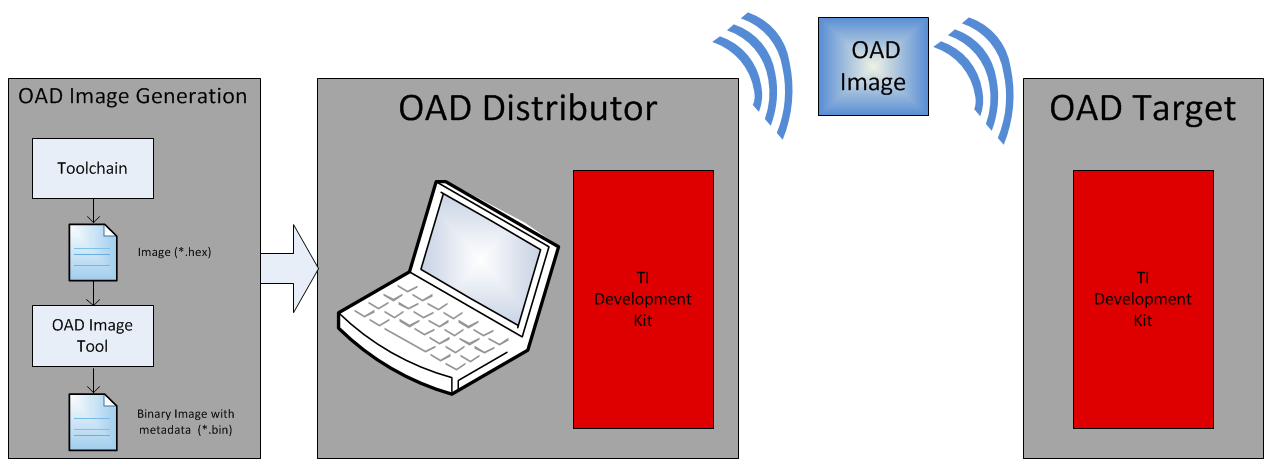Introduction¶
This chapter serves as a guide to the Texas Instruments Over-the-Air Download (OAD) ecosystem including the custom over the air specification, application architecture, drivers, and middleware. OAD is a device firmware upgrade method that allows the firmware image running on a device to be updated over the air while providing power loss protection.
The guide will cover the principles of the OAD process, the out of the box examples included in the SimpleLink CC26x2 SDK, and the process for adding OAD to an existing project.
Note
Updating the device firmware over serial (UART or SPI) connection from a host MCU using the CC26xx embedded ROM Serial Bootloader (SBL) is covered in application note CC2538/CC26xx Bootloader Interface (SWRA466).
The OAD guide chapter will cover:
- Boot Image Manager (BIM) and the device startup procedure. See Boot Image Manager (BIM)
- OAD image header and how it is populated. See OAD Image Header
- OAD theory of operation and architecture
- Flash layout for OAD applications
- Protocol stack specific examples of OAD
- How to add OAD to an existing sample application.
The supported development kit for OAD is the CC26x2 LaunchPad. To follow the procedures listed in this guide, two CC26x2 LaunchPad development kits are required. The flow of this document will follow the boot process of the device from BIM to the user application, explaining the concepts as they come up.
OAD Topology Overview¶
Two wireless devices are required to perform an OAD. The terms for the devices involved in an OAD exchange are listed below:
The OAD target is the device that receives the incoming image over the air. The OAD target is responsible for implementing the protocol stack specific transport layer that is used for sending and receiving OAD image data.
The OAD distributor is responsible for fragmenting the new firmware image into protocol stack specific packets and sending them over the air.
Note
The OAD distributor may take any form. Below it is illustrated as a TI development kit connected to an associated PC tool, but it can also be a mobile device or another TI embedded device that implements the protocol specific transport.
Figure 111. shows a graphical relationship of the devices required for an OAD transfer.

Figure 111. OAD Distributor and OAD Target
